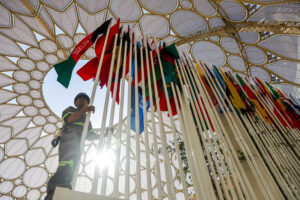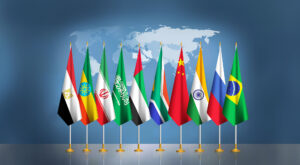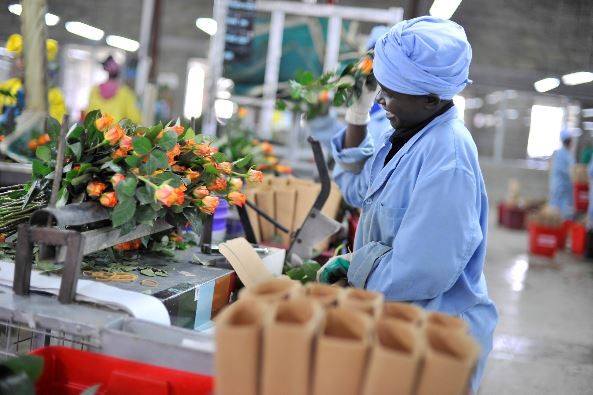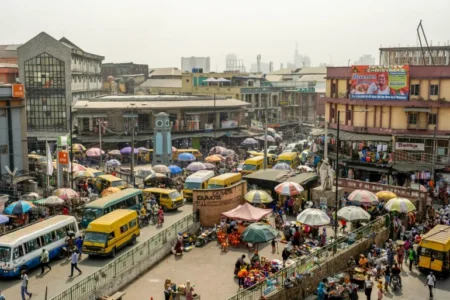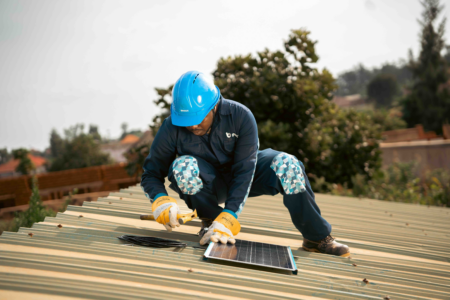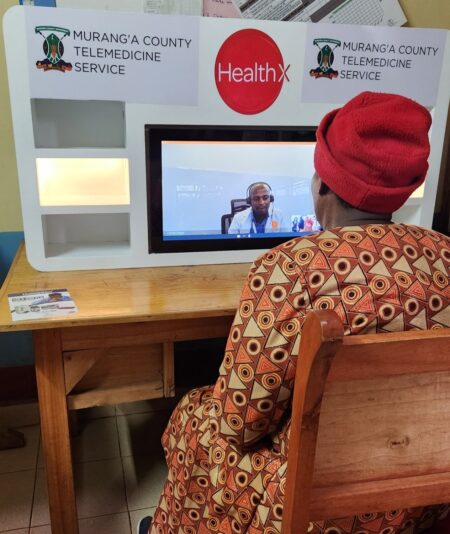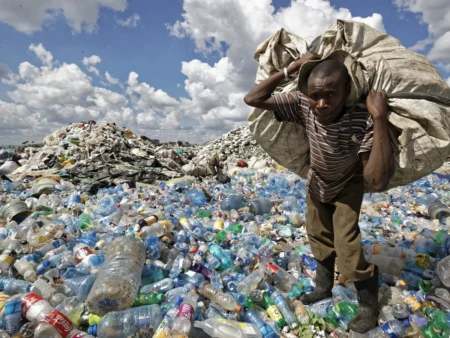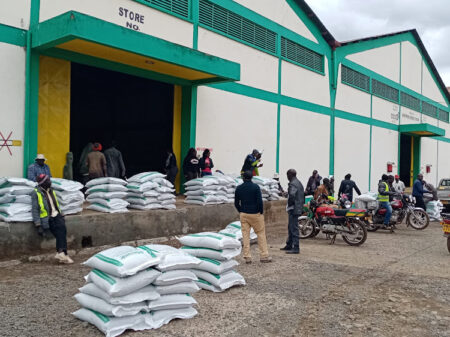- 1.5°C future on the line: Why nations must cut emissions now or lose target
- IMF Growth Forecasts: BRICS to Lead the World in the Next 5 Years
- Vantage Capital seals exit from PickAlbatros Hotels after $18.4M pandemic boost
- Madica backs Earthbond in bold pre-seed bet on sustainable solutions
- Venture capital and debt drive growth in Kenya’s agri-tech sector
- Sustainability Week Africa: Pioneering change amidst climate challenges
- Refugee Crisis in Chad as War and Hunger in Sudan Drive Thousands Across Border
- Senegal 2050: A Blueprint for Economic Transformation
Browsing: Kenya
- Kenya solidifies its position as East Africa’s tourism hub, with Nairobi chosen to host the Africa Youth in Tourism Innovation Summit for 2025, 2026, and 2027.
- The summit, which draws hundreds of innovators, government leaders, and tourism experts, will boost Kenya’s post-COVID tourism recovery.
- Organized by TEAMS Africa, the event underscores Nairobi’s growing prominence on the global tourism stage following a successful edition in Namibia.
Kenya, East Africa’s travel and tourism industry hub, has yet again cemented its position in the hospitality sector after the capital Nairobi was picked to host the Africa Youth in Tourism Innovation Summit and Challenge (AYTIS) for the years 2025, 2026, and 2027.
This feat further reinforces Kenya as a tourism destination of choice as the industry continues to register growth post the Covid-19 economic fallout.
AYTIS is a platform that is fashioned to promote and uplift innovative investors within the dynamic tourism industry in …
- Kenya’s rising debt obligations have failed to reduce the debt that currently stands at about $82.2 billion.
- Service costs went up from 58% after the government paid $2 billion Eurobond.
- Sovereign bond-holders accounted for $6.6 billion of the external public debt stock.
The National Treasury has laid bare the pain awaiting Kenyans in repaying loans borrowed from external lenders and domestically. Fresh data tabled in Parliament reveals that taxpayers will dig deeper in their pockets in the next financial years to repay loan obligations.
Details show that for every $0.78) Sh100 the government collects, $0.53 (Sh68) goes to servicing the $82.2 billion (Sh10.6 trillion) debt pile reported as of June 30, 2024. The treasury revealed that the country’s debt stock increased by $2.3 billion (Sh303 billion) compared in the year ended June 2024 compared to a year ealier. Currently, Kenya’s debt stock is projected to hit $100.7 billion (Sh13 trillion) …
- Kenya’s rose flower exports face increased scrutiny in the EU despite the market remaining the top destination for fresh produce.
- Kephis says that the EU has imposed stricter guidelines for flower exports.
- In addition to roses, capsicum has also seen a rise in interceptions, with seven cases in 2023 compared to zero in 2020.
Heightened scrutiny for Kenya’s rose exports
Kenya’s flower export industry, particularly its rose exports, is facing heightened scrutiny from the European Union (EU) as interceptions of shipments due to pest concerns have significantly increased. 2023 there were 37 interceptions on roses, nearly doubling the 21 interceptions reported the previous year.
This rise is a cause for concern, especially since Kenya is the world’s leading exporter of roses, making the stakes even higher for the industry. Kenya Plant Health Inspectorate Service (KEPHIS) says that the EU has imposed stricter guidelines for flower exports, particularly for pests like …
- The latest Stanbic IBTC Bank Nigeria PMI shows most companies continued to report less demand, attributable to an increase in the cost of products.
- Nigerian industries reported the sharpest rise in input costs and output prices in six months.
- High pump prices, transportation, and materials for manufacturers continued to hurt businesses in the month under focus.
Inflation in Nigeria
Rising inflationary pressures in Nigeria hit businesses hard at the close of the third quarter, with selling prices increasing by the sharpest margin in six months. The country’s private sector reported marginal job opportunities in September, the lowest in the previous three months.
According to Stanbic IBTC Bank Nigeria PMI, most companies continued to report less demand, attributable to an increase in the cost of products amid thinning incomes. Findings show that business confidence dipped in September and was the second lowest level on record, only just above July.
“Nigeria’s …
- With its multiple technologies, Bboxx is trailblazing in the green energy space, scaling its operations across Africa and projecting to offset over 20 million tonnes of CO2.
- Bboxx has been awarded Gold Standard certification for carbon credit programs based on solar home systems, clean cooking alternatives, and solar-powered water pumps.
- Implementing carbon programs allows Bboxx to accelerate market growth potential by reaching over 4 million customers in five African countries.
Rwanda-based Bboxx plans to offset over 20 million tonnes of carbon and generate $100 million worth of carbon credits through clean energy projects in Africa.
In this initiative, Bboxx projects to positively impact the lives of over four million customers across Rwanda, Kenya, Nigeria, Togo, and the Democratic Republic of Congo (DRC).
These revelations follow Bboxx’s recognition with the Gold Standard certification for its continued rollout of clean energy projects in five African countries. This certification marks a vital moment …
- The introduction of telemedicine in Murang’a County, Kenya, is bringing healthcare services closer to the people.
- A pilot program has been initiated in the county to decentralize healthcare, reduce the crowds in major hospitals, and ensure that Murang’a residents receive quality medical care.
- One of the best benefits is the ability for patients to talk to doctors without having to travel.
Access to healthcare is a great challenge for many residents in Murang’a County, Kenya. With most healthcare services centralized in major hospitals, people in remote areas are often forced to travel long distances, with great time and financial costs, to receive medical care. The introduction of telemedicine offers a revolutionary solution to these challenges, bringing healthcare services closer to the people.
A six-month pilot program, under the leadership of His Excellency President Ruto, and governor Kang’ata, has been initiated to decentralize healthcare, reduce the crowds in major hospitals, and …
- Guinea has announced a single-use plastic ban, signalling the growing momentum of the African plastic ban movement.
- Guinea prohibits the production, import, sale, and use of single-use plastics, including plastic bags and oxo-degradable plastics.
- The country now joins trailblazers Rwanda, Kenya and Somalia, who banned single-use plastics in their jurisdictions.
Africa is experiencing a vital environmental wave with the increasing rollout of tough measures on single-use plastics. With trailblazers Rwanda and Kenya having banned single-use plastics, Guinea has joined the elite club, announcing a sweeping ban on single-use plastic products and packaging.
Early this year, Somalia joined this movement, banning the use of single-use plastics beyond June 30, 2024. Authorities in the Horn of Africa country urged individuals and businesses to explore using environmentally friendly alternatives to meet their packaging needs.
This move by the West African country signals a historic moment for the continent's push to counter the…
- Kenya’s private equity deals size are expected to remain modest this year.
- However, despite the high optimism, deal sizes in East Africa are expected to remain modest.
- However, businesses are concerned that firms will be scouting for exits, too.
Kenya and its East Africa peers are confident that the fundraising environment for businesses will continue improving in the next 12 months even as the continent experiences mixed expectations.
New findings by Audit firm Deloitte show that while East and West Africans largely anticipate an improvement, opinions in North and Southern Africa are divided, with some expecting improvements, others predicting stagnation, and some foreseeing deterioration.
This outlook comes against the backdrop of persistent high interest rates, inflation, and geopolitical uncertainty, which led to a 9 per cent drop in finalized funds year-on-year in 2023.
The Deloitte Africa Private Equity Confidence Survey 2024, shows that in East Africa, optimism is on …
- Kenya’s fertilizer distribution reforms were introduced by Ruto’s administration when it ascended to power.
- Fertilizer consumption in Kenya averaged 59 kilos per hectare of arable land between 2017 and 2021
- AGRA says the disruption in the supply chain has forced SME agro dealers to cease operations, leading to a dysfunctional fertilizer distribution system.
Kenya’s fertilizer distribution reforms have led to a 20.5 per cent drop in the country’s fertiliser usage, new findings by the AGRA show.
The organisation, formerly known as the Alliance for Green Revolution, in its Africa Agriculture Status Report 2024 points out that the government led changes have seen consumption drop from 835,000 tonnes in 2020 to 663,400 tonnes in 2022, with further declines anticipated in 2023 farming season.
According to data from the World Bank, fertilizer consumption in Kenya averaged 59 kg per hectare of arable land between 2017 and 2021, with per capita consumption increasing …
- Jamie Dimon embarks on a strategic journey in October seeking to grow the US banking giant’s footprint in Africa.
- This will be Dimon’s return to Africa after seven years.
- The lender’s CEO will be touring Kenya, Nigeria, South Africa, and Ivory Coast.
Jamie Dimon, CEO of JPMorgan Chase, is set to visit Africa in mid-October, marking his first trip to the continent in seven years. The head of the largest U.S. lender, with assets exceeding $4.1 trillion, will visit key markets, including Kenya, Nigeria, South Africa, and Ivory Coast, according to sources familiar with the matter.
Dimon’s visit comes as JPMorgan aims to expand its presence in Africa, a continent ripe for investment opportunities, where both sovereign debt and corporate deals are becoming increasingly attractive to global banks.
With the bank already operating in South Africa and Nigeria, this trip signals JPMorgan’s intent to deepen its foothold in African markets, …
